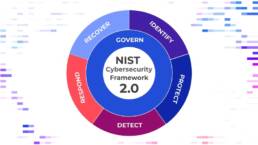Cyber Risk Quantification
Recent challenges have impacted companies in unprecedented ways. In this digital age, cybersecurity is crucial for protecting businesses’ revenue, growth, reputation, and overall security posture.
Managed Security Service Providers (MSSPs), like Zyston, play a critical role in protecting businesses from a variety of cyber threats. One of the key components of a successful cybersecurity program is understanding the level of risk a business faces. This is where cyber risk quantification (CRQ) comes in.
What is Cyber Risk Quantification?
Cyber risk quantification is the process of evaluating and measuring the potential impact and likelihood of a cyber attack. It involves assessing various factors, such as the value of your business assets, the vulnerabilities in your system, and the potential threats that could exploit those vulnerabilities. The result is a quantitative analysis of the overall risk that a company faces iin terms of probability and potential loss.
Why is Cyber Risk Quantification Important?

In 2023, cyber risk continues to be a growing threat, with the frequency and severity of cyber attacks increasing worldwide. According to recent statistics by Cybersecurity Ventures, global cybercrime damages are projected to reach $10.5 trillion by 2025, up from $3 trillion in 2015. The average cost of a data breach for an organization in 2023 is estimated to be $4.24 million, as reported by the 2022 Cost of a Data Breach Report by IBM Security and Ponemon Institute.
CRQ is important because it helps companies make informed decisions about how to allocate their cybersecurity resources. By understanding the potential risks they face, companies can prioritize their efforts to protect their most valuable assets and take steps to reduce their overall risk exposure.
In addition, cyber risk quantification can also help companies meet regulatory requirements for cybersecurity. Many industries, such as finance and healthcare, are subject to strict regulations that require them to maintain a certain level of cybersecurity. By quantifying their cyber risk, companies can demonstrate that they are taking appropriate measures to comply with these regulations.
How Does a Cybersecurity Company Conduct Cyber Risk Quantification?

Cybersecurity companies use a variety of tools and techniques to conduct cyber risk quantification. One approach is to use a risk assessment framework, such as NIST Cybersecurity Framework or Zyston’s CyberCAST, which provides a structured approach to identifying and assessing cyber risks.
CyberCAST
CyberCAST is our comprehensive cybersecurity software that enhances our managed security services. Our platform illuminates critical insights into an organization’s threat susceptibility and informs a dynamic cybersecurity strategy that matures over time with your business. Best of all, you don’t have to be a technical genius to understand it. CyberCAST delivers all security findings in plain business language that’s easy to understand and communicate to executive leadership and your board.
We evaluate findings based on business risk and categorize vulnerabilities according to systemic and process-related issues through penetration testing. Subsequently, we formulate a strategic and tactical roadmap to enhance your security score incrementally. Our primary objective is to improve and mature your cybersecurity posture by channeling our efforts toward reinforcing your defenses.
Conclusion
Cyber risk quantification is an important tool for companies looking to manage their cyber risk exposure. By quantifying their risk, companies can prioritize their cybersecurity efforts and demonstrate compliance with regulatory requirements. Cybersecurity companies play a key role in conducting cyber risk quantification, using a variety of tools and techniques to provide companies with a comprehensive understanding of their risk profile.









